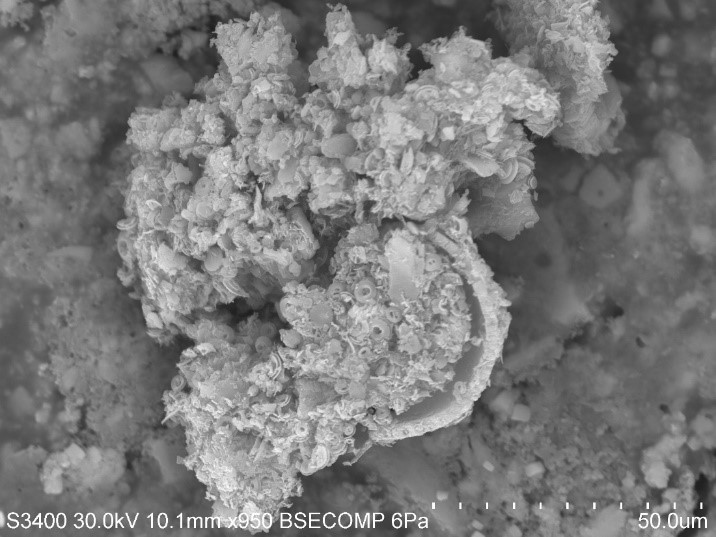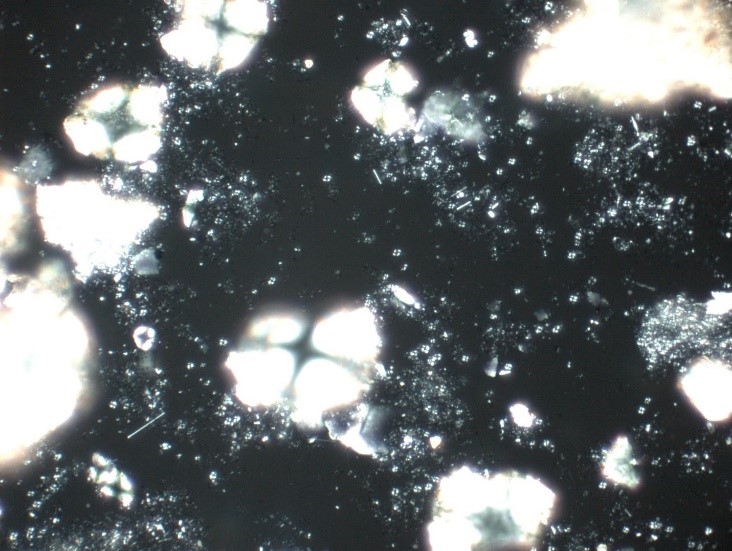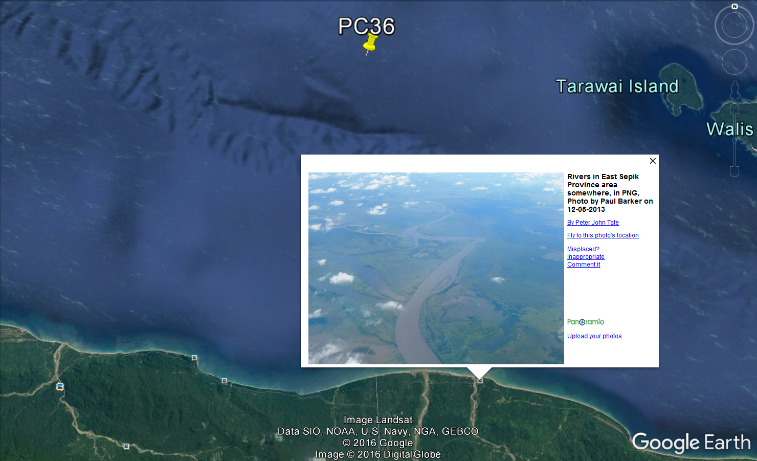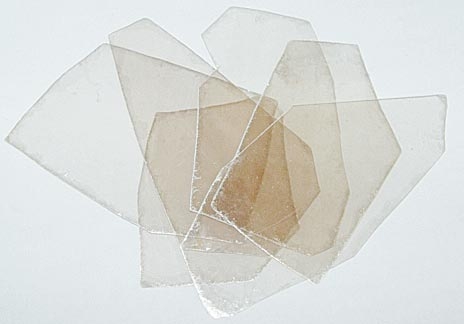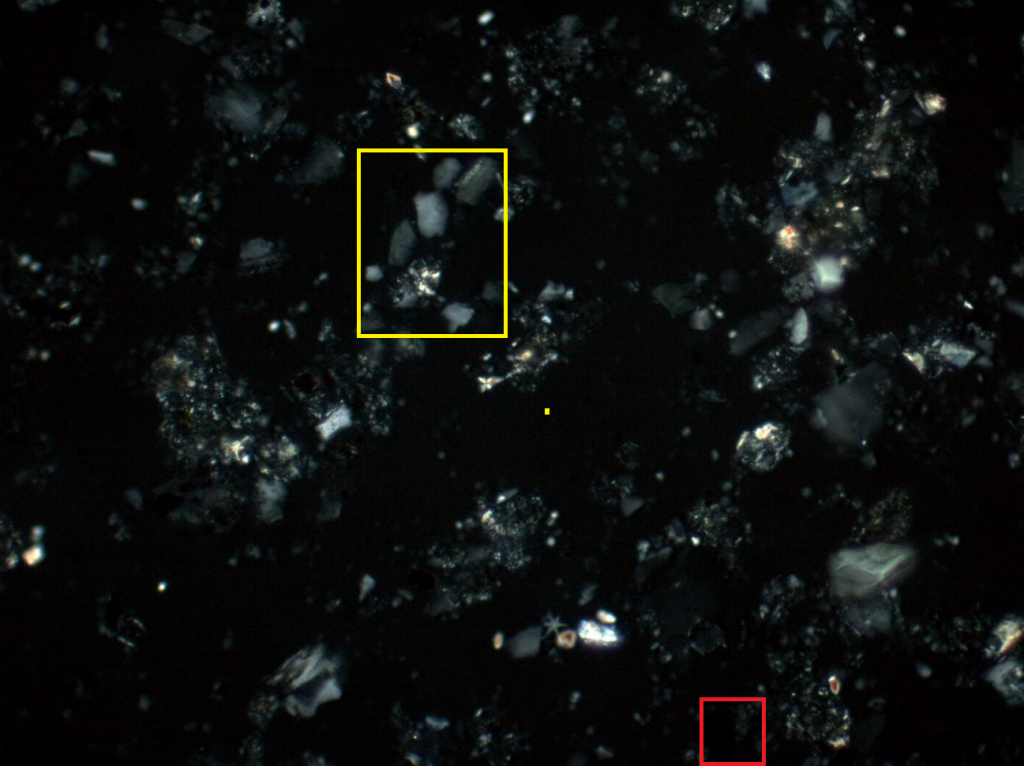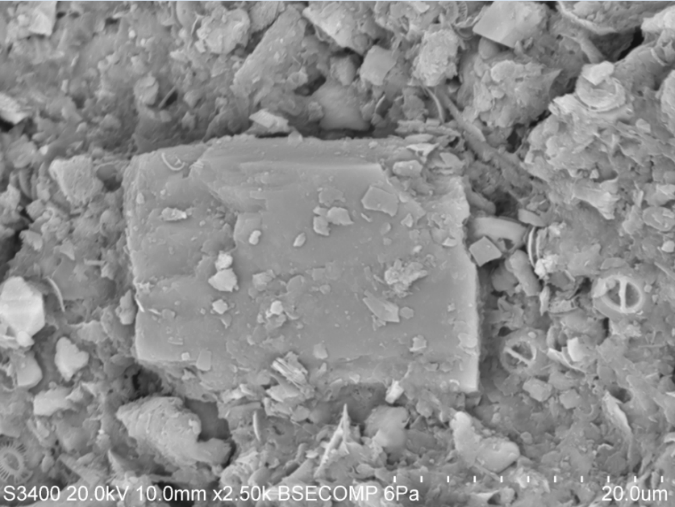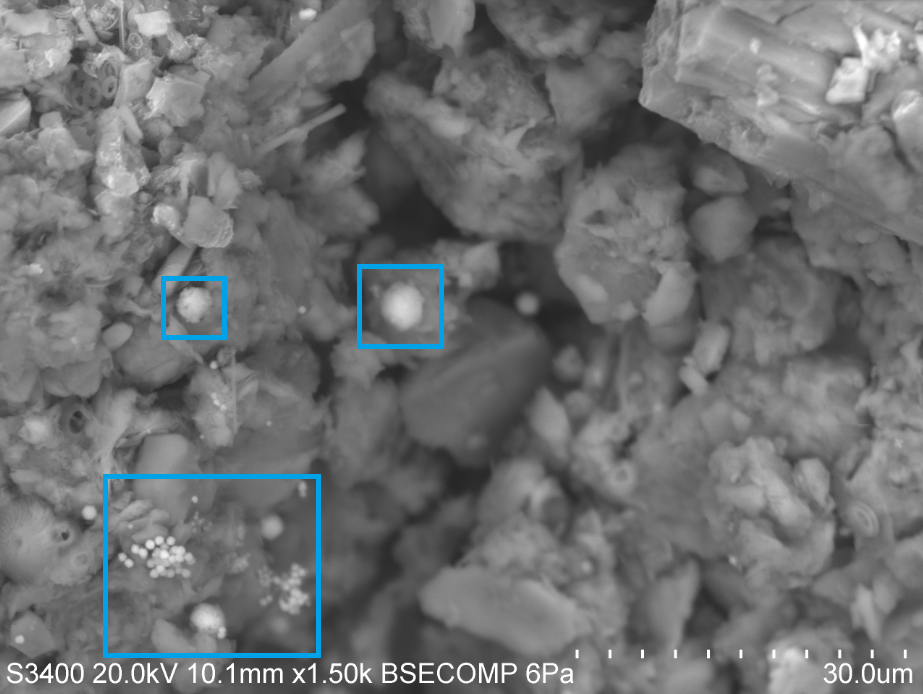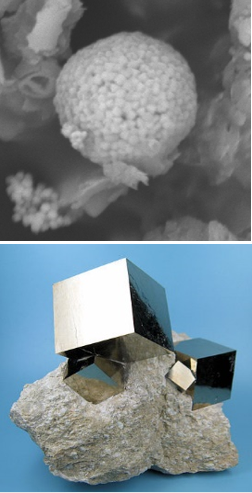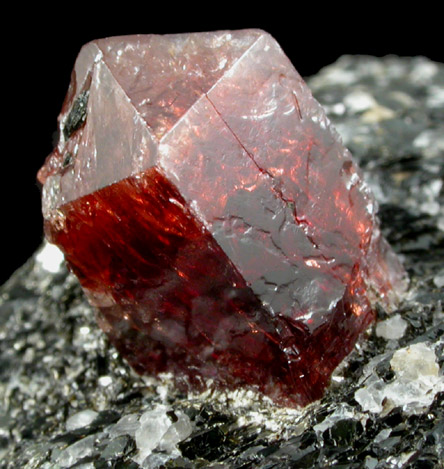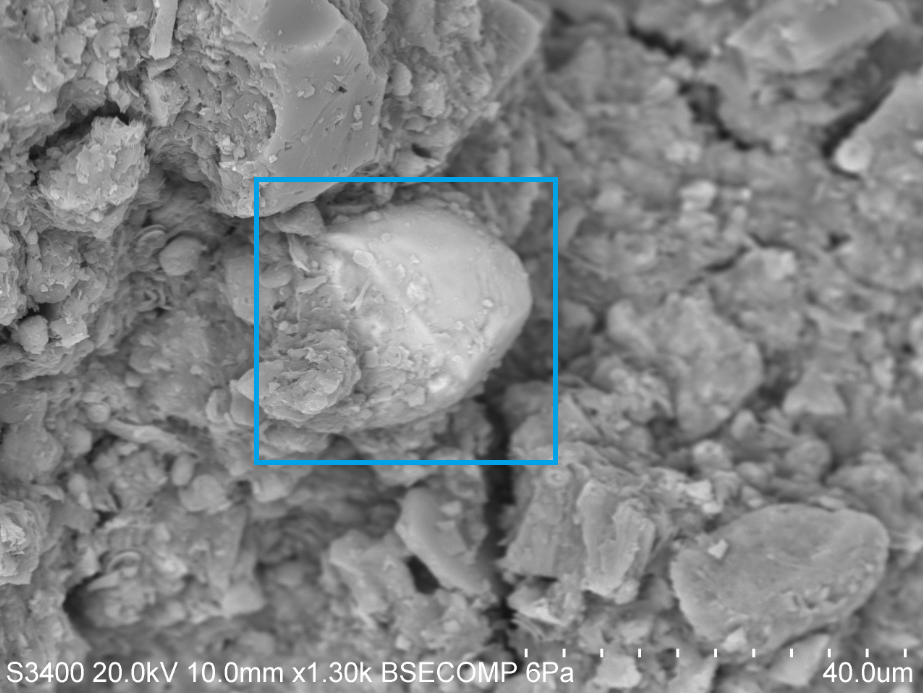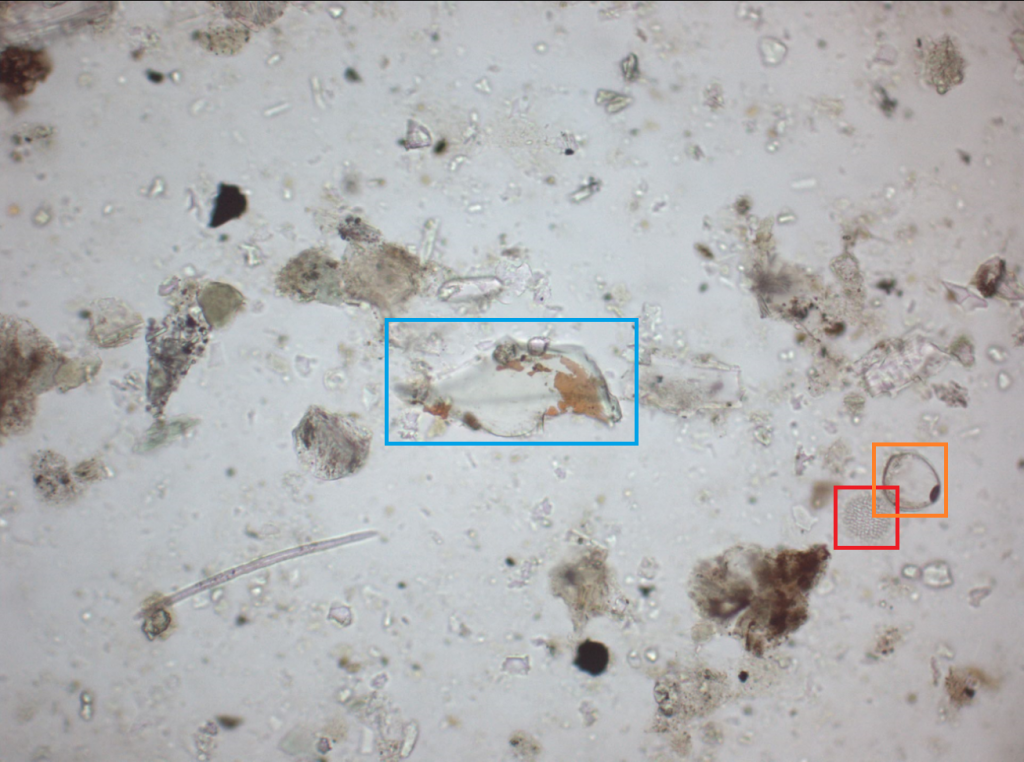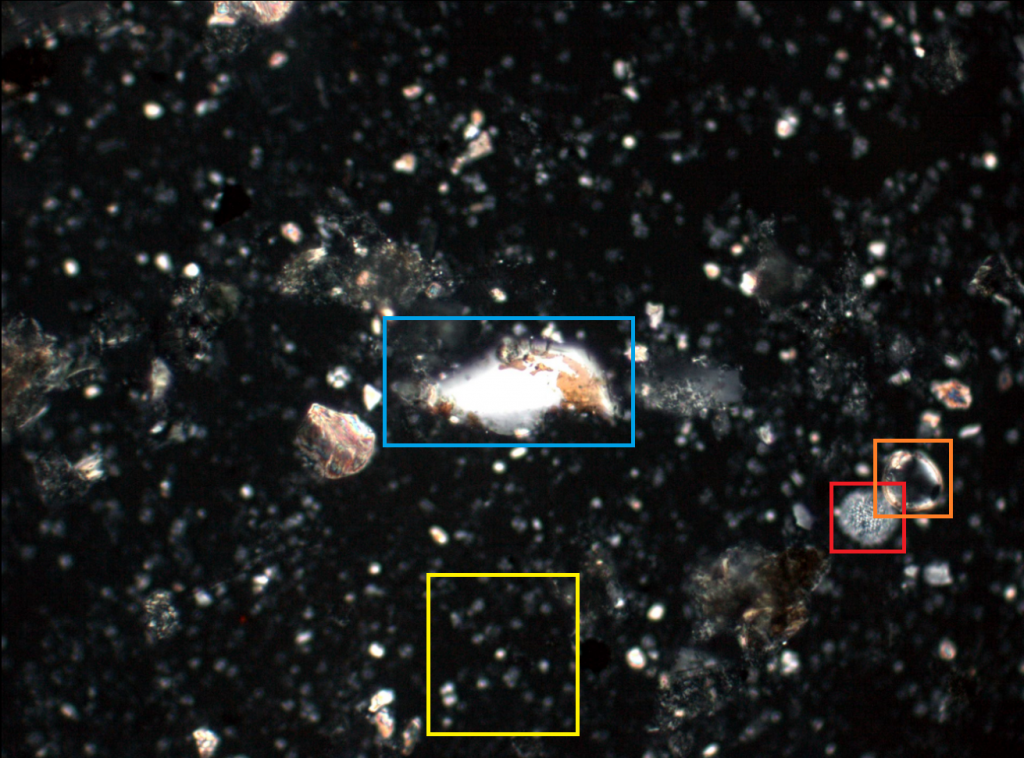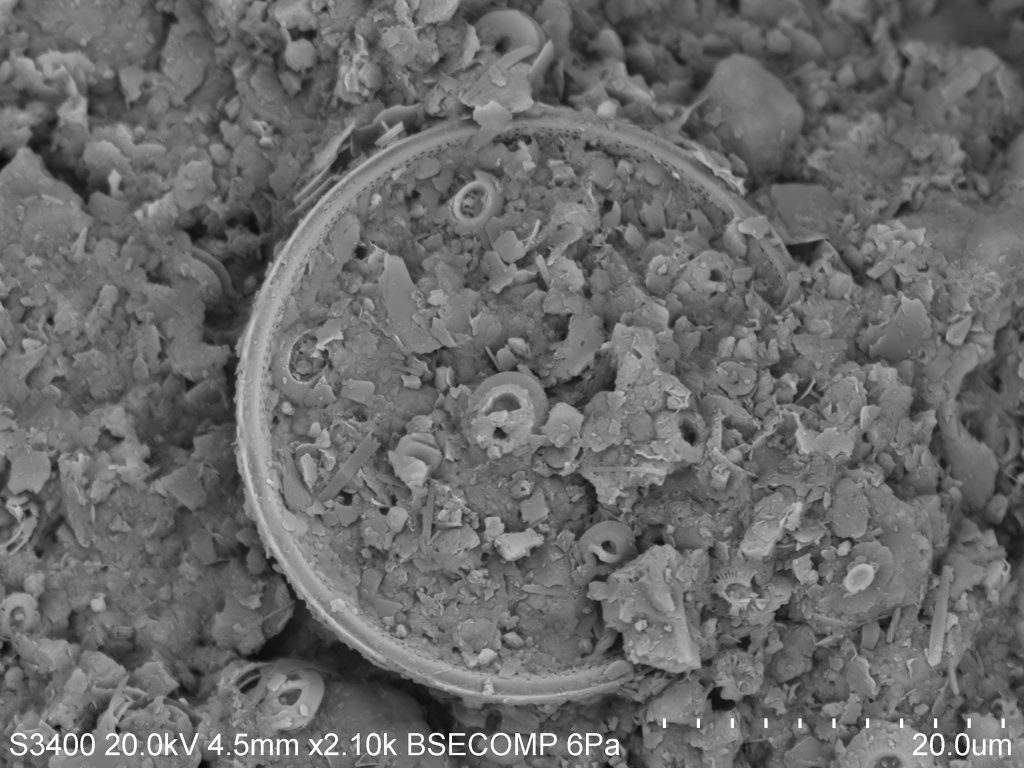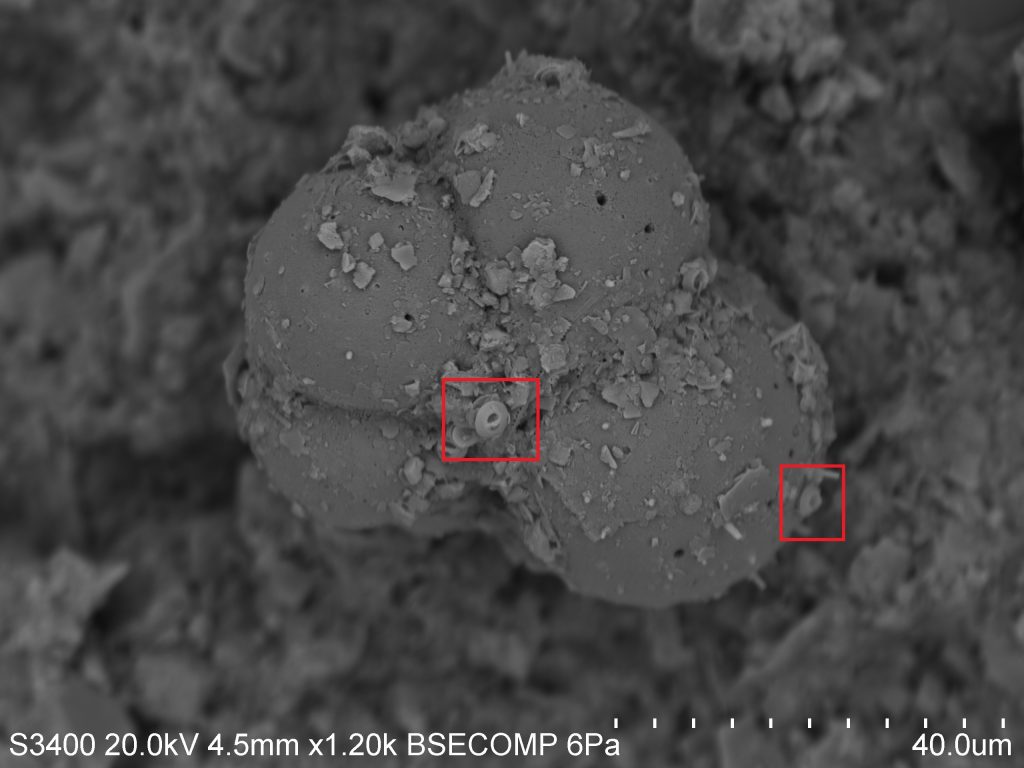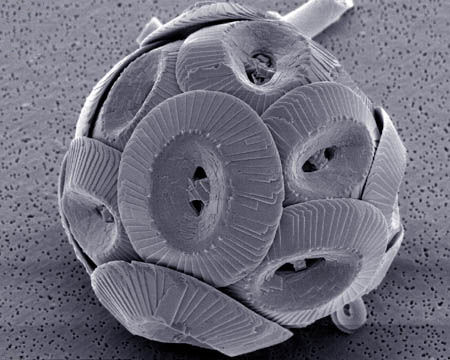Previous posts in the New Guinea region have discussed sites adjacent to delta fronts. Nearshore sediments are typically variable in nature consisting of sand, mud, pebble-sized particles, and biogenic material. Here, we will focus on piston core 26 (PC26), a drill site furthest from the shoreline. PC26 was extracted south of Manus Island at a water depth of 875 m and a subsurface depth of 48-49 cm. Sediment deposition in deep water environments, located on the abyssal plain, build up at reduced rates. These decreased rates of sediment accumulation are due to the limiting factors of particle transport; volcanic ash and windborne particles are slowly transported towards the open ocean environment. Therefore, we should expect sediment extracted from PC26 to be largely homogenous.
Immediately, it is apparent that sediment from PC26 is predominantly biogenic material. The image above highlights several chambered tests, or shells of foraminifera. Their test are typically cemented with sand grains or other materials, and crystalline CaCO3 in the form of calcite or aragonite depending on the species. This particular species has large pores and exhibits a trochospiral chamber arrangement. A mature foraminifera may range from 100 µm to 200 cm in length. There are approximately 4,000 species of forams, although only a few modern species are in existence, making these microogranisms the most abundant shelled protists in the marine environment since the Cambrian period.
At close inspection, we can see an aggregate of coccolithophores settled within a foraminifera test. There is a distinctive difference in the size and shape of these two microorganisms that have the identical chemical compositions. Therefore, it is suitable to characterize this pelagic sediment as calcareous ooze, given its calcic nature. The remarkably small size of coccolithophores in comparison to forams does not limit its abundance in pelagic sediments. Calcareous oozes cover approximately one-thirds of the Earth’s entire surface, and due to seawater/carbonate interactions, calcareous ooze begins to dissolve below the calcium carbonate lysocline in the water column. Consequently, material below the calcium carbonate compensation depth calcareous ooze completely dissolves.
A visual representation of what we see underneath the SEM is also visible in PPL (top) and XPL (bottom). In PPL, the pore-rich tests of the foraminifera are easily distinguishable, particularly in the upper left corner. In XPL their calcite bearing shells illuminate the field of view with their four-chambered anatomy. Similarly, aggregates of coccolithophores are distinguishable in XPL.



